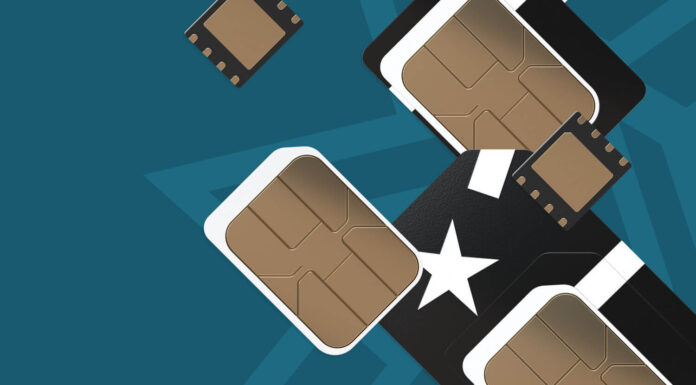The new SGP.32 standard finally delivers what eSIM technology promised all along, which previous standards failed to support: truly flexible and future-proofed IoT connectivity management.
The global IoT industry is on the verge of a pivotal moment that could dramatically change how IoT connectivity is activated and managed, and finally eliminate many of the hurdles that large enterprise users of IoT face today as they look to expand and cost-effectively manage their IoT deployments. The moment will be marked by the arrival in the second half of 2025 of the first eSIMs based on the GSMA SGP.32 standard – a moment that comes two years after the release of SGP.32 technical specifications and after much testing and validation.
This new standard gives IoT users the flexibility and growth potential that has long characterized the smartphone industry. The core eSIM technology has been available in the smartphone sector for years, and has brought both flexibility and rapid market growth. The introduction of SIMs incorporating the capabilities outlined in the SGP.32 standard provides a missing piece that will finally make eSIM technology practical for large IoT deployments that rely on cellular IoT connectivity.
The road to SGP.32

What customers ultimately want from their IoT deployments is future-proof connectivity. They expect to be able to put something in place that they will not have to rip out and replace later, and that can easily be adapted as they continue to evaluate their connectivity needs and compare and consider the coverage, cost, and other aspects of the IoT connectivity packages offered by different providers. Having an eSIM in a connected device means not having a physical SIM that needs to be swapped out every time a connectivity change is made.
SGP.32 is not the first eSIM standard, or even the first standard designed to bring eSIM capabilities to machine-to-machine (M2M) communications. It has been more than a decade since the introduction of SGP.02, the first standard that specified how an eSIM (or embedded universal integrated circuit card; eUICC) could be used to enable remote SIM provisioning for connected machines and devices. While SGP.02 supported features needed in machine-to-machine, it required complex carrier-to-carrier integrations.
These were rarely feasible in practice in a competitive environment in which carriers were often not very willing to help facilitate actual profile switching on eSIMs. Despite having the technical capability for a digital change of profiles, the process of switching IoT connectivity carriers remained cumbersome.
Years after SGP.02, the practical hassles of direct carrier integrations were more directly addressed in SGP.22, a standard update which gave birth to server-based subscription manager/data preparation (plus; SM-DP+) capability for downloading and managing eSIMs directly from a connected device. But SGP.22 was designed for consumer use cases where a person can operate each device, which is not realistic in IoT scenarios. It eased the challenges of profile switching for consumer devices, but it assumed human interaction through device interfaces.
Clearly this was and remains completely impractical for remote IoT deployments where devices lack screens and are often physically inaccessible.
What SGP.32 brings
SGP.32 bridges this critical gap by enabling remote profile management without human intervention. It inherits SGP.22’s multi-carrier flexibility while adding the remote orchestration capabilities that IoT demands – which is crucial to ensure that IoT devices in different markets and geographical areas can leverage the best combination of IoT connectivity and cost available to them through different carriers.
The new standard enables a kind of ‘connectivity hypervisor’ – which, ideally, allows customers to deploy with a profile and scale seamlessly. With the right platform in place, customers can selectively push additional profiles remotely when needed, for any reason – such as to gain an economic advantage, extend coverage to new areas, or comply with regulatory requirements that vary greatly from one country to the next.
The key is to work with a provider with a diverse profile portfolio to support this orchestration, while simultaneously preparing SGP.32-capable products. These products are expected to start rolling out this year, but as with most standards it will take some time for SGP.32 to be ubiquitous.
The operational efficiency gains enabled by the new standard are transformative. For manufacturers and distributors who have previously managed SIMs/eSIMs from multiple carriers, SGP.32 dramatically simplifies the kitting process. Instead of managing separate inventory for different deployment scenarios – for example: AT&T SIMs for customer A, Verizon SIMs for customer B, and both for customer C – manufacturers and distributors can standardize on a single SGP.32-capable SIM/eSIM.
They can then selectively download additional carrier profiles as needed post-deployment. This eliminates complex pre-deployment carrier selection decisions and reduces inventory management overhead significantly. For coverage and cost optimization, customers no longer need to predict optimal carrier choices upfront. They can deploy with a standard multi-carrier global profile, then analyze actual performance data and download region-specific or cost-optimized profiles based on real-world usage patterns rather than theoretical coverage maps.
The SGP.32 standard also helps IoT customers achieve the next level of ‘always-connected’ capability. Additional profiles downloaded to SGP.32 eSIMs can also serve as backup profiles in case an incident prevents the main profile from connecting. An IoT provider with a customer’s best interests in mind can deploy a SIM applet that detects connectivity interruption with the primary profile, and automatically switches to a backup profile, and then reverts when the connectivity problem is resolved. This adds a crucial failover layer that keeps devices connected during carrier or upstream network provider incidents.
Technology based on the SGP.32 finally delivers what eSIM technology promised from the beginning, but which previous standards fell short of adequately supporting. It grants IoT customers true flexibility and the ability to future-proof IoT connectivity management. It provides practical operational efficiency benefits for customers, and better positions IoT technology to achieve broader worldwide growth. In short, it puts the IoT sector on the verge of realizing the kind of explosive growth and expansion we already have seen in the smartphone market.
Kenta Yasukawa is co-founder and CTO at Soracom, where he has led deployment of an advanced cloud-native telecom platform, designed specifically for the needs of connected devices. Before co-founding Soracom, he was a solutions architect with AWS and conducted research for connected homes and cars for Ericsson in Tokyo and Stockholm. He holds a Ph.D. in engineering from the Tokyo Institute of Technology, with additional studies in computer science at Columbia University’s Fu Foundation School of Engineering and Applied Science.

